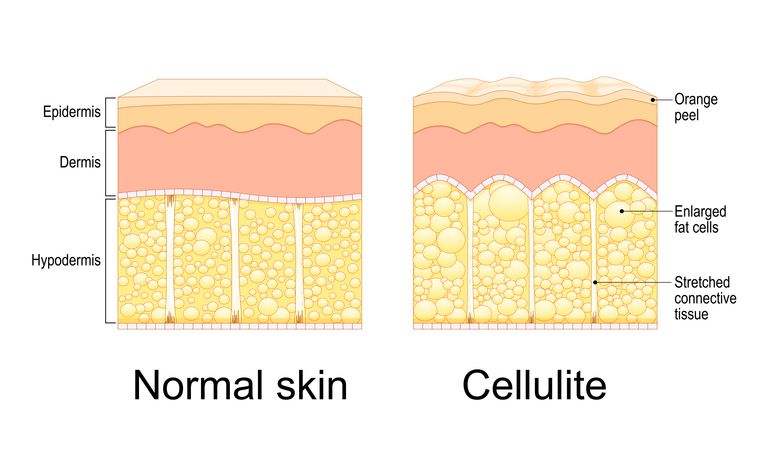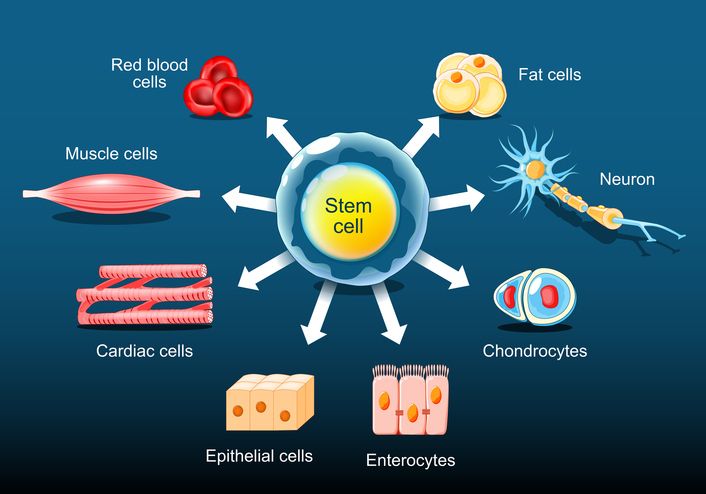
Author: Natalie Ng|Updated: 5 June 2025
You’ve had a full night’s sleep, drank plenty of water, and still, those shadows under your eyes won’t budge. If that sounds familiar, you’re probably dealing with genetic tear troughs—not just typical eye bags. These hollows sit low under the eyes, starting from the inner corners and running down toward the cheeks. They don’t really puff up or disappear with rest, and chances are, you’ve seen the same thing on a parent or sibling. They usually become more noticeable in your mid-twenties, when the natural ageing process starts to show around the eyes. As fat shifts and volume is lost, the skin around the eyes, especially in the tear trough area starts to thin and sink. That’s when shadows show up more easily, especially in bright or uneven lighting. Dark circles from tear troughs tend to look deeper, more like a hollow than a smudge of colour. Eye creams and good sleep might help with puffiness, but they won’t fix lost volume or the way light hits those grooves. That’s because genetic tear troughs are mostly about structure, not just surface. If concealer never really does the trick and the under eye area still looks tired no matter what you do, keep reading. We’ll cover what causes them, why they’re different from regular eye bags, and what can actually help.

Genetic Tear Trough Sign 1: They Stay Even When You’re Well-Rested

Tear troughs that don’t fade with rest are likely genetic
If the hollows under your eyes don’t improve after getting enough sleep, drinking more water, and eating well, you’re probably dealing with genetic tear troughs. These aren’t caused by fatigue or poor skin hydration. Instead, they’re linked to inherited features and how your facial structure is built.
Sleep and lifestyle won’t change their appearance
Try checking your under eye area after a few days of proper rest and good hydration. If the grooves still look deep and shadowed, that’s a clear sign they aren’t from being tired. Tear troughs caused by genetic factors tend to stay the same, even when you feel well-rested. They often appear as a defined hollow rather than puffiness, which is more common with fluid retention or sagging skin.
Volume loss and facial changes make them more visible
These tear troughs often become more noticeable in your mid-to-late twenties, when the natural ageing process starts to reduce fat in the cheeks and under eye area. As the fat pads shift and volume is lost, the tear trough area can look deeper. Shadows and dark circles become more obvious, especially in bright lighting.
Family traits often play a role
If you’ve spotted similar hollow eyes, sunken under eye areas, or dark circles in your parents or siblings, it’s another sign your tear troughs are genetic. The structure around the lower eyelid and inner corner of the eye often follows patterns passed down through families. This can include thin skin, deficient fat under the eyes, or early signs of volume loss.

Genetic Tear Trough Sign 2: Hollows Look Like Grooves, Not Puffiness
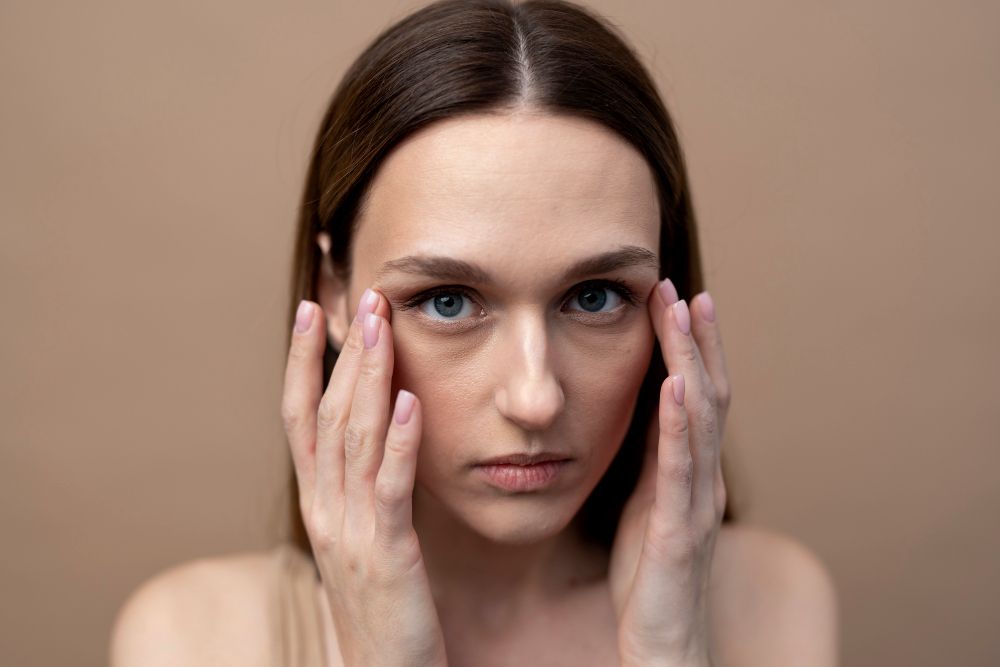
Grooves follow a defined path under the eyes
Genetic tear troughs don’t look swollen or raised. Instead, they form a clear groove beneath the eye that stays in place, even as your weight changes. This indentation usually follows a smooth curve from the inner corner of the eye out toward the upper cheek. It mirrors your bone structure, creating a shadow that sticks to the same path every time you look in the mirror.
Puffy eyes respond to lifestyle, grooves don’t
If your under eye area often looks swollen when you’re tired but improves after rest or diet changes, that’s likely puffiness—not tear troughs. In contrast, the hollows caused by genetic tear troughs don’t change. You might notice they’ve looked the same for years, even if your body weight has changed or your skincare habits have improved.
Tear troughs aren’t affected by weight changes
Eye bags and puffiness can get worse or better depending on your diet, hydration, or how much sleep you’ve had. But genetic tear troughs tend to stay the same. Whether your face looks fuller or leaner, the groove remains. This is because tear troughs are caused by deeper factors, like lost volume, fat pads under the skin, and your natural bone structure.
These grooves are often early, stable features
Many people with genetic tear troughs notice them early in life. If you’ve had faint hollows or a shadowed look under your eyes since childhood or your teenage years, this is a strong sign the feature is genetic. While the hollows become more pronounced with age, the groove-like shape and placement don’t change much over time.
These under eye features aren’t caused by short-term changes. They’re part of how your facial structure develops and how volume shifts with age—something lifestyle changes alone can’t fully fix.
Read More
Book Now to Experience
Miracle Eye Rescue Treatment
1 Minute Self-Registration
Date should not be before minimal date

Genetic Tear Trough Sign 3: Shadows Follow a Fixed Line Under the Eyes
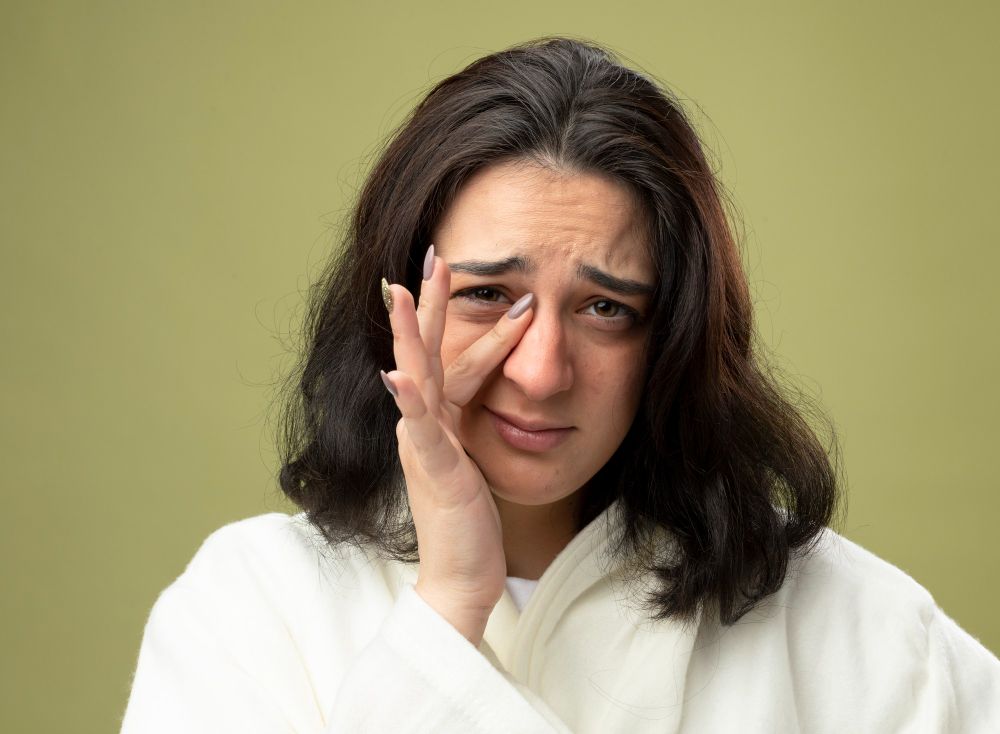
Tear trough shadows match your bone structure
One of the clearest signs of genetic tear troughs is the way shadows form. They follow a smooth, curved line from the inner corner of the eye down toward the cheek, usually tracing the orbital bone. This shadow isn’t random. It lines up with your natural facial structure and doesn’t shift around like puffiness can.
Shadows stay consistent in different lighting
Unlike temporary dark eye circles or puffiness that may come and go, shadows from genetic tear troughs show up in nearly every type of lighting. Whether you're under soft indoor lights or natural daylight, the shadow tends to stay in the same place. In brighter, overhead lighting, it might even appear deeper or more defined.
You can feel the hollow where the shadow sits
If you gently run your finger along the area where the shadow falls, you’ll likely notice a subtle dip. This indentation confirms it’s more than just discoloration—it's a physical hollow in the under eye area. That’s why tear trough filler or other dermal fillers are often used to treat tear troughs by restoring volume and smoothing the groove.
This type of under-eye shadow doesn’t fade easily with makeup or rest, because it’s caused by structure—not just skin tone or tiredness.

Genetic Tear Trough Sign 4: Family Members Share Similar Under-Eye Features

Similar eye hollows in relatives don’t always mean it’s genetic
It’s common to notice under-eye hollows in your parents or siblings and assume they’re inherited. But having a similar look doesn’t always mean you’ve inherited genetic tear troughs. These features can be influenced by shared lifestyle habits—like poor sleep routines, stress, or similar diets—rather than purely by genetic factors.
Shared environments affect how tear troughs appear
If you and your family live in the same climate, follow similar routines, or have the same skincare habits, the eye area might age in a similar way. These environmental and lifestyle factors can lead to skin thinning, dark eye circles, and even sagging skin around the lower eyelid—all of which can resemble genetic tear troughs, even if they’re not inherited.
Focus on what can be changed
Even if tear troughs run in your family, not everything about them is fixed. Lifestyle changes like improving sleep, protecting the under-eye area from sun damage, and using skincare that supports collagen can all help reduce their appearance. Genetic or not, the way tear troughs look is shaped by more than just DNA.
Book Now to Experience
Miracle Eye Rescue Treatment
1 Minute Self-Registration
Date should not be before minimal date

Genetic Tear Trough Sign 5: Concealer Doesn’t Fully Cover the Hollow
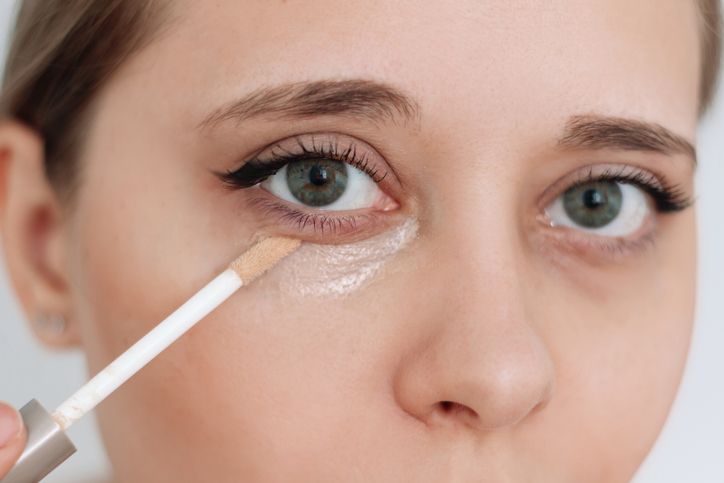
Shadows stay visible even after makeup
If you’ve applied concealer and still notice a dark, sunken look under your eyes, you’re likely dealing with genetic tear troughs. These grooves create a physical dip in the under-eye area, which causes shadows that makeup alone can’t fully hide. Even with proper blending, the indentation can still catch light in a way that makes the area look tired or hollow.
Concealer settles into the groove
When applying makeup over a tear trough, the product often sinks into the depression instead of sitting evenly on the skin. This can make the under-eye area look creased or uneven, especially after a few hours of wear. Heavier products tend to settle more, which can make the shadow more noticeable instead of less.
Hydration and prep help, but results are limited
Using a lightweight, hydrating eye cream and a thin layer of concealer can improve the finish, but it won’t change the structure. Even with color correctors and finely milled powders, the hollow may still be visible. That’s because the issue isn’t just pigment—it’s the shape of the under eye area. Tear trough filler made from hyaluronic acid is often recommended when makeup and skincare alone aren’t enough to treat tear troughs caused by lost volume.

Genetic Tear Trough Sign 6: Lighting Makes the Hollow Look Deeper

Tear troughs appear worse under harsh or direct light
If your under-eye area suddenly looks more sunken or shadowed in certain lighting, that’s another sign you may have genetic tear troughs. These hollows tend to catch and reflect light in a specific way, especially when it's coming from above. Overhead lighting in office spaces or direct sunlight at midday can make the indentation look deeper than it really is.
Some lighting angles highlight the groove more than others
Natural daylight often reveals the true shape of the tear trough area, but it’s harsh indoor lighting that makes it look more dramatic. Shadows fall directly into the groove, creating a stronger contrast against the surrounding skin. That’s why tear troughs may seem more noticeable when you’re looking in a mirror with overhead lights or taking photos in bright sunlight.
Softer lighting can reduce how visible they seem
In diffused or side lighting, the shadow often appears lighter and less defined. This change isn’t because the groove goes away—it’s simply less visible without strong directional light highlighting the hollow. That’s why the appearance of tear troughs may seem to change depending on where you are or how the light hits your face. But the structure stays the same, confirming that it's not caused by puffiness or temporary factors.
Book Now to Experience
Miracle Eye Rescue Treatment
1 Minute Self-Registration
Date should not be before minimal date

Genetic Tear Trough Sign 7: Eye Creams and Hydration Don’t Make a Difference

Skincare helps the surface, not the structure
If you’ve been using eye creams and staying hydrated but your under-eye hollows haven’t improved, it’s likely you’re dealing with genetic tear troughs. These grooves are caused by volume loss, bone structure, and skin laxity—not dryness or lack of skincare. While moisturisers and serums can smooth the surface, they won’t fill the hollow or reduce the depth of the groove.
Hydration improves skin, but not the hollow
Drinking more water and applying creams with hyaluronic acid can boost skin hydration and improve elasticity. The skin around the eyes may look a bit fresher or firmer, but the groove itself won’t disappear. That’s because the cause isn’t on the skin’s surface—it’s deeper, involving fat loss and thinning tissues under the lower eyelid.
Tear trough treatment may be needed to restore volume
If eye creams haven’t helped and you still see a visible hollow, treatment options like tear trough filler may be more effective. Hyaluronic acid fillers are often used to treat tear troughs because they’re made from a naturally occurring substance that adds volume and smooths out the indentation. While skincare supports the eye area, dermal fillers directly address what causes the shadow and groove in the first place.

Why Tear Troughs Are Hard to Treat With Home Remedies
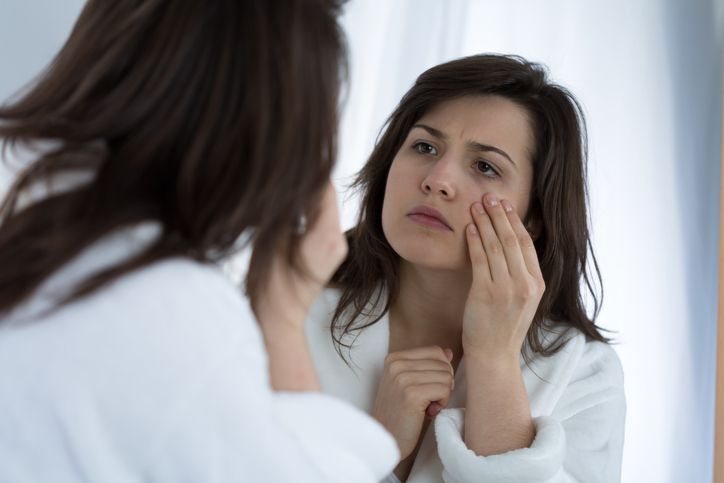
Topical products can't restore lost volume
Most creams and serums promise to brighten dark circles or reduce puffiness, but they don't work for genetic tear troughs. That’s because the issue isn’t just about surface skin. Tear troughs are shaped by deeper changes, like lost volume, deficient fat, and the way your under eye area is supported by underlying structures. Creams can improve skin texture and hydration, but they can’t rebuild volume beneath the skin or shift the position of fat pads.
Lifestyle changes help—but only up to a point
Getting enough sleep, staying hydrated, avoiding alcohol, and using SPF daily are all good habits that can support the skin around the eyes. These steps may soften the appearance of dark eye circles or mild puffiness. But for people with genetic tear troughs, these changes usually don’t fix the hollow look under the eyes. That’s because these grooves are more related to genetic factors, fat loss, and the natural ageing process than lifestyle alone.
How professional treatments make a difference
Professional tear trough treatments—like injectable fillers, radio frequency-based therapies, and other non-invasive procedures—go deeper. They don’t just treat the skin’s surface. Instead, they target the tissue under the lower eyelid, helping to restore volume, support collagen production, and smooth the tear trough area. Treatments like hyaluronic acid fillers can also lift sunken areas for a more youthful appearance.
If your eye bags, dark circles, or sunken eyes have stayed the same despite creams and rest, it might be time to consider tear trough treatment. The right solution can address both the visible and structural causes of the problem.
Book Now to Experience
Miracle Eye Rescue Treatment
1 Minute Self-Registration
Date should not be before minimal date

Treating Genetic Tear Troughs with Miracle Eye Rescue Treatment

Why skincare alone isn’t enough for tear troughs
Genetic tear troughs are shaped by bone structure, fat loss, and volume changes in the lower eyelid—not just skin hydration or dark circles. This means typical creams, masks, and lifestyle changes can only do so much. If the hollows under your eyes have stayed the same despite regular sleep, eye cream use, and hydration, a treatment that goes deeper may offer better results.
How Miracle Eye Rescue Treatment helps
The Miracle Eye Rescue Treatment targets the deeper causes of under-eye hollows. It uses medical-grade triple-wavelength radio frequency (RF) energy combined with red and blue light therapy to stimulate circulation, reduce fat under the eyes, and support collagen growth in the tear trough area. This is especially helpful for those with genetic tear troughs, where sunken skin and thin tissue around the eyes cause deep shadows and dark circles that don’t respond well to surface treatments.
During the treatment, RF energy warms the deeper skin layers, improving blood flow around the eyes and gently breaking down excess fat. Red and blue light work together to support lymphatic drainage, soften the appearance of dark circles, and promote healing. At the same time, this process boosts collagen, a naturally occurring substance that helps restore volume and smooth out skin.
What makes this treatment effective
• Non-invasive with no downtime: Unlike surgery or injectable fillers, there are no incisions, needles, or healing time. You can return to your normal routine right after the session.
• Targets multiple concerns: In one treatment, it can help improve dark eye circles, eye bags, tear troughs, fine lines, and skin laxity.
• Stimulates natural collagen production: This helps fill sunken areas under the eyes, reduce the look of deficient fat, and firm the skin to reduce shadows and hollowness over time.
• Safe for most skin types: It's a low-risk solution for patients looking to treat tear troughs without going through more invasive procedures like surgery or injectable fillers.
If your genetic tear troughs don’t improve with lifestyle changes or makeup, this non-surgical treatment may be a practical option to restore volume and improve the overall appearance of the under eye area.

Comparing Tear Trough Treatments: Why Miracle Eye Rescue is the Better Choice
Tear trough filler helps restore volume, but has limits
Tear trough filler is often used to smooth out hollow under-eye areas caused by lost volume or deficient fat. It involves injecting hyaluronic acid, a naturally occurring substance in the body, to fill in the groove under the eyes. Results are visible almost instantly, and many patients notice an improvement in dark shadows and overall skin texture.
• Fills volume loss quickly
• Effects last 6 to 12 months
• Best for mild, non-puffy tear troughs
• Commonly used in aesthetic clinics
That said, fillers don’t treat all types of tear troughs. If your under-eye area has puffiness, excess fat, or loose skin, filler can sometimes make it worse. It also doesn’t improve circulation, skin texture, or reduce dark pigmentation. That’s where Miracle Eye Rescue stands out.
Miracle Eye Rescue Treatment offers more complete results
Miracle Eye Rescue Treatment goes beyond surface-level correction. It uses triple-wavelength radio frequency energy along with red and blue light therapy to target deeper causes of tear troughs—like fluid retention, excess fat, and sagging skin. The treatment improves blood flow, dissolves fat, and encourages natural collagen growth to support the eye area from within.
• No injections or incisions
• Helps reduce puffiness, dark circles, and eye bags
• Boosts collagen to lift and firm sunken skin
• Safe for most skin types and well-tolerated
• Improves overall eye contour and skin texture, not just volume
For people with genetic tear troughs, this treatment addresses more than just hollowing. It works on multiple layers of the skin to smooth out shadows, firm sagging skin, and reduce puffiness—something fillers alone cannot do.
Why Miracle Eye Rescue is the better option
While fillers may be helpful for isolated volume loss, Miracle Eye Rescue is better suited for people dealing with several overlapping issues—like under-eye fat, dark circles, fluid retention, and early skin laxity. It’s non-invasive, low risk, and doesn’t involve any downtime.
If you’re looking for a safer, more well-rounded solution for treating genetic tear troughs and improving the overall appearance of the under eye area, Miracle Eye Rescue offers a more effective long-term approach.
Book the Miracle Eye Rescue Treatment today to refresh your look and reduce visible hollows—without injections or downtime.
New Beauty's R6 Miracle Eye Rescue TreatmentBook Now to Experience
Miracle Eye Rescue Treatment
1 Minute Self-Registration
Date should not be before minimal date
FAQ
What causes genetic tear troughs to appear earlier in some people?
Genetic tear troughs are mainly influenced by inherited facial structure, such as the shape of the orbital bone, thin skin, and naturally lower fat pads under the eyes. If these features run in your family, you may notice dark circles or hollow eyes as early as your late teens or early twenties. Factors like collagen levels, skin laxity, and blood vessels under the skin also affect how early these hollows become visible.
Can lifestyle changes prevent tear troughs from getting worse?
While lifestyle changes like staying hydrated, getting enough sleep, and protecting the under eye area from sun damage won’t stop genetic tear troughs, they can help delay worsening. These habits can reduce the appearance of dark eye circles, improve skin hydration, and slow the natural ageing process, which all contribute to how noticeable the hollows become over time.
Are dermal fillers the only way to treat tear troughs?
No. While tear trough filler is one of the most direct ways to restore volume in the under-eye area, there are other treatment options. Non-invasive options like RF-based treatments, laser therapy, and microneedling with serums or injectable fillers can also help, depending on whether your concern is fat loss, skin thinning, or fine lines. The best approach depends on your specific condition and goals.
Why do my tear troughs look darker after makeup?
Makeup can sometimes make tear trough shadows more obvious if the product settles into the groove or if the concealer shade is too light or doesn’t match your skin tone. Poor lighting and flash photography can also exaggerate dark circles. Tear troughs that are hollow will reflect light differently, creating a natural shadow that even the best makeup can’t fully hide.
Is tear trough filler safe for people with thin skin?
Yes, but it must be done carefully. People with thin skin around the eyes are more likely to experience visibility of filler if it’s not injected properly. That’s why choosing a provider with experience in tear trough treatment is important. A soft, lightweight hyaluronic acid filler is typically used, and the placement technique matters to avoid lumps or puffiness. Always consult with a professional before deciding on dermal fillers for thin skin.
Recommended Articles
COPYRIGHT© NEW BEAUTY MANAGEMENT LIMITED 2025. ALL RIGHT RESERVED.

